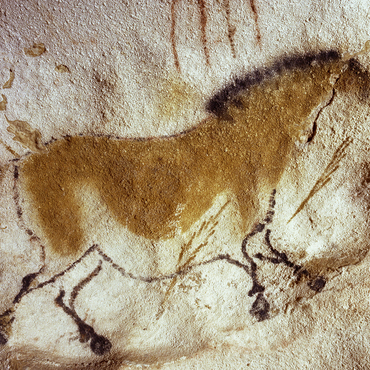
- Home
- Parietal art
- The techniques
The two dominant forms of expression in Palaeolithic parietal art, drawing and engraving, occupy an important place in cave and shelter iconography. Nevertheless, there is another technique, which is seen far less often in these contexts, which took on monumental proportions at Lascaux. It is painting, a pictorial form that is only found in France at Font-de-Gaume and in a few isolated spots in caves in the Pyrenees, notably in Portel.
What is most captivating is the simplicity of the techniques and the material means used, given the excellence of the works. A few flints, some blocks of pigment, grinding stones, a few brushes and swabs, and stencils cut from hides – although most often the human hand was used for this purpose. This is the sum total of the materials and tools needed for the graphic construction of the sanctuary. Research carried out in Ariège in the Niaux cave has revealed that the pigments were generally mixed with talc to economise on the rarer colorants. In the region of Lascaux, pigment was in abundant supply and needed no additive, with the exception of water that was used as a binder.
The dating of the parietal figures in the Chauvet-Pont-d’Arc cave shows that engraving and drawing were perfectly mastered as of 30,000 years BCE. Spray painting, modelling and sculpture appeared somewhat later in an underground context, as far as we currently know.apparaissent un peu plus tard en contexte souterrain, dans l’état actuel des découvertes.
Associated media
Open Media Library

Brush painting

Rock incision

The outline technique
